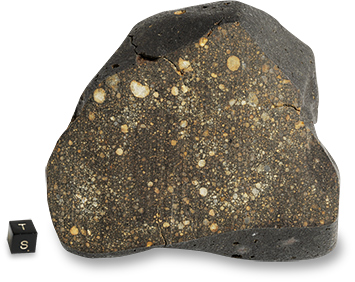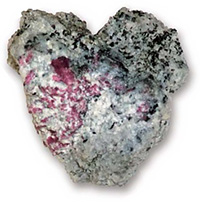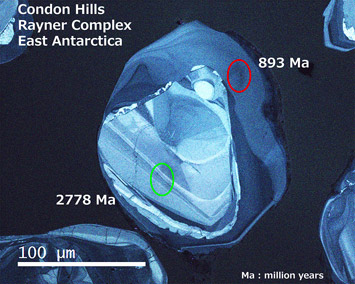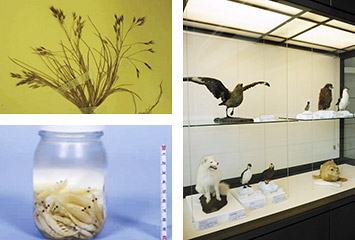National Institute of Polar Research
Polar Science Resources Center
Scientific resources from polar regions - Key materials to uncover the global changes and mystery of Earth's evolution
Director Tomokazu Hokada
Antarctic Meteorite Research Center
The main task of the Antarctic Meteorite Research Center is curation of Antarctic meteorites recovered since 1969, which includes naming and initial classification of meteorites, allocation to researchers, permanent storage, and overall management of Antarctic meteorites. Annually, the center publishes the classification of meteorites in the Meteorite Newsletter.

The Yamato 790448 meteorite classified into LL3, which is one of the unequilibrated ordinary chondrites.
Rock Specimen Archive
The Rock Specimen Archive has collected and preserved some 20,000 rock and mineral specimens since the first Japanese Antarctic Research Expedition (JARE). The archive stores rocks and minerals not only from Antarctica but also Sri Lanka, India and Africa as international scientific research. Its collection is important for geological correlations and studies of earth’s crust and mantle materials constituting Gondwana supercontinent. Specimens are organized according to year and region collection and are updated database.

Ruby crystals (red) found around Syowa Station in Antarctica.
SHRIMP Laboratory
SHRIMP Laboratory
The SHRIMP (sensitive high resolution ion microprobe) laboratory maintains and operates 2 SHRIMP units for inter-university collaborative research infrastructure used for isotopic analyses and dating of earth and planetary materials.

Sensitive high resolution ion microprobe (SHRIMP) for age dating of minerals.

Results of age dating on zircon. The white circle at the center yields 2778 million years old, and the red circle at the outer rim yields 893 million years, respectively.
Biological Specimen Archive
NIPR collects and manages biological specimens obtained from scientific studies in polar regions. These specimens are provided for research or exhibitions. Approximately 40,000 plant specimens (mainly moss) and 2,500 animal specimens are archived. Searches for archived specimens can be made through the ‘Database of Polar Biodiversity’ on the NIPR website.

Biological specimen








